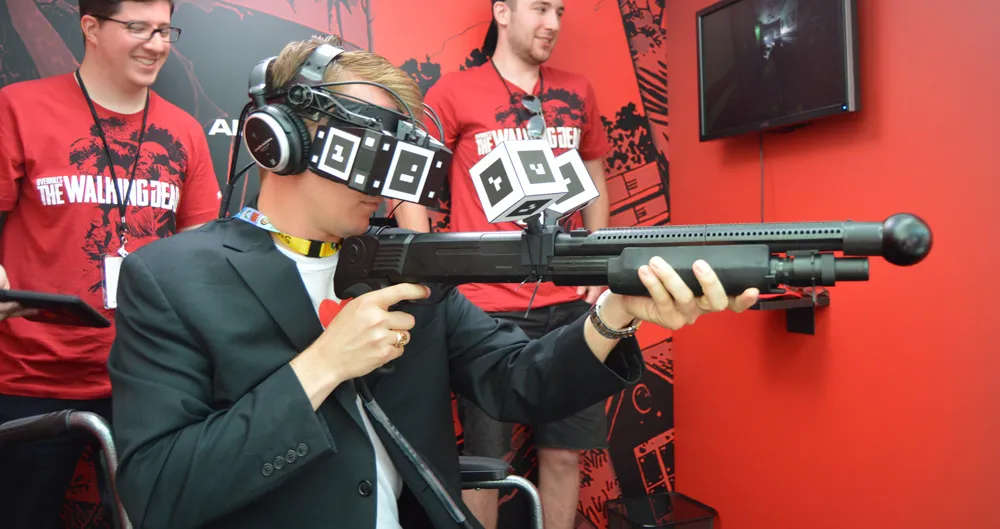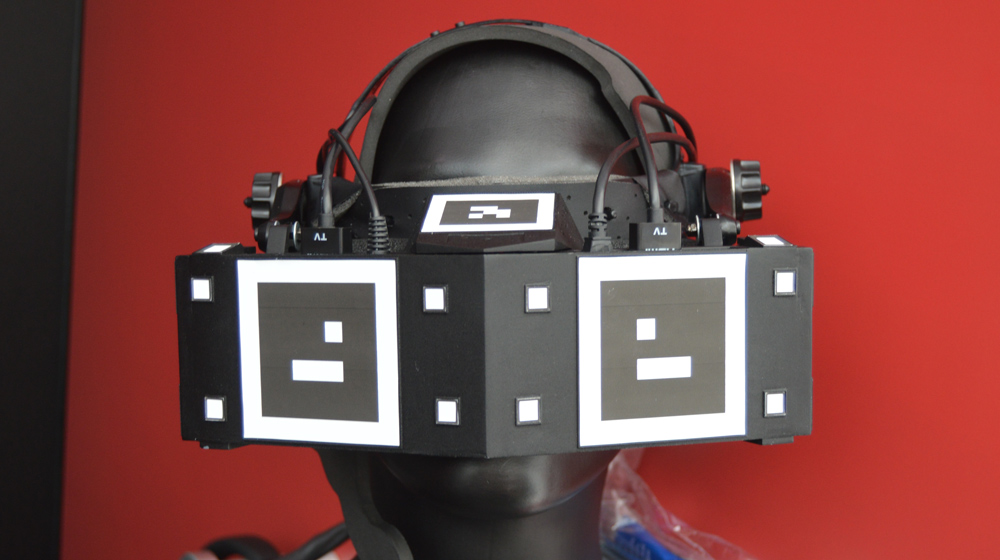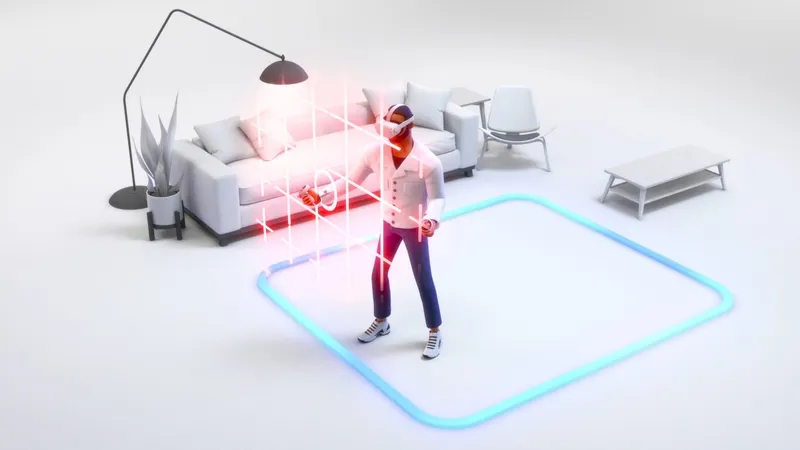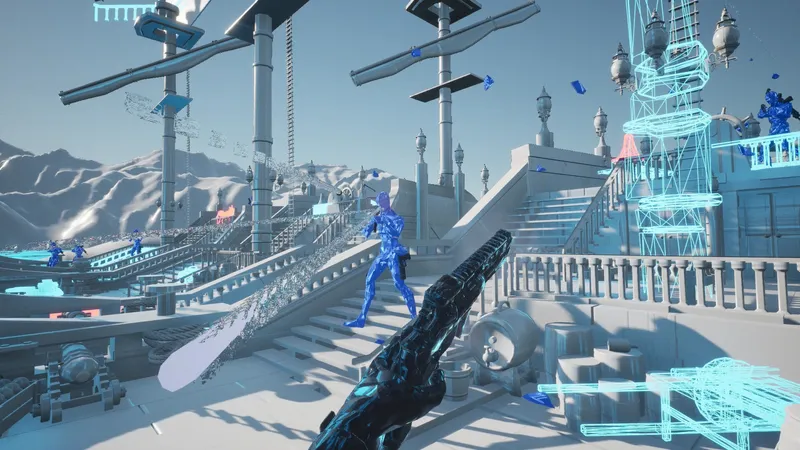Oculus isn’t the only VR hardware company with some big news this week. Today Starbreeze, the company behind the 5K 210° FOV StarVR HMD, announced they have partnered with the eye-tracking technology company Tobii to bring eye tracking to the device.
Read More: Hands on with StarVR
Back in March we reported on Tobii’s interest in the VR space. At the time Tobii told us, “we are working with different people to find what we think is the best solution to move forward,” it looks like StarVR was that best solution. Previously, Tobii had been using its eye tracking technology outside of the VR space, mostly for market research purposes.
Eye tracking will likely prove to be a vital piece of virtual reality’s future, if not its near present, due to the number of important things it enables. First and foremost it brings with it the ability to interact with the world with your eyes opening up the possibility for a number of big things, from a user interface you can control with your eyes (imagine looking up to the corner and bringing down a menu) to enabling more realistic social and AI communication.
Read More: FOVE proves the market for VR eye tracking
Beyond the actual interaction with people and the environment eye tracking could help crack the code for rendering incredible amounts of detail in VR through a process known as foveated rendering. Foveated rendering takes advantage of the fact that in human vision the areas in the edges of what we can see aren’t as clear as what is in the center. By following the eyes you can determine where the center of the gaze is and then render the areas along the edges in lower resolution with little effect on how you perceive the scene. This could save on a lot of processing power and open the doors to even crazier VR experiences.
A similar trick can be applied with eye tracking to create depth in a scene without necessarily needing to render stereoscopically. By following the eye developers are able to determine where you are focusing and then shift the other elements out of focus at varying degrees. This is actually the same way your eyes see making the solution much more natural and realistic than the current methodology.
https://www.youtube.com/watch?v=c-6dS69NaZE
An example of how depth of field works with eye tracking in VR,
Adding eye tracking to the StarVR makes it all the more intriguing. The headset currently boasts some rather impressive technical specifications but in our hands on with it the positional tracking left something to be desired. The headset currently is utilizing a fiduciary marker based tracking system with a camera and a set of markers on the headset and peripherals. Fiduciary tracking suffers greatly from issues with occlusion and light contrast, which was evidenced in our test. This method could change, however, as company officials told us at E3 they are “open” to solutions like Valve’s Lighthouse tracking system and that they are still experimenting with various different solutions. (It is worth noting that Valve used a fiduciary-based tracking system in their early “Valve room” demos, the same demo that Zuckerberg was shown at Oculus that convinced him to buy the company)
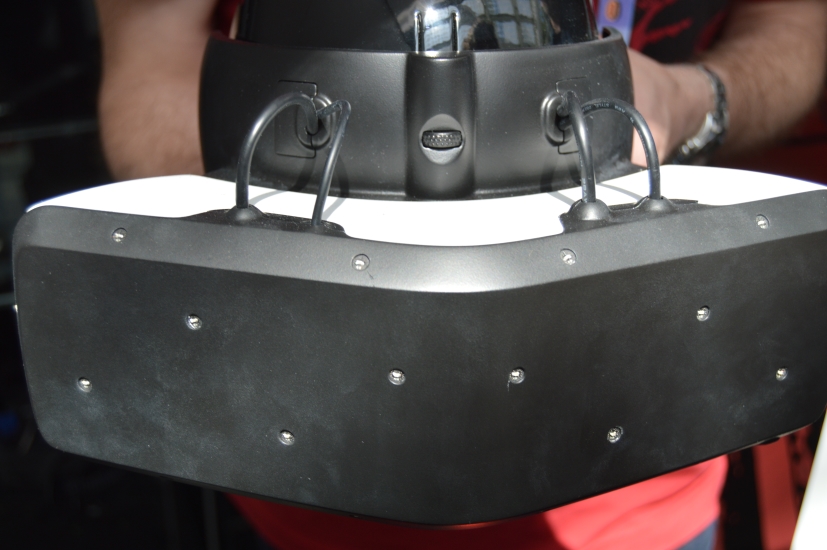
That said, Tobii’s eye tracking makes the headset very interesting, but they won’t be without competition. StarVR is now one of two HMDs with embedded eye tracking, joining FOVE who recently completed a successful Kickstarter campaign and received investment from Samsung Ventures. Additionally, SMI has been experimenting with Oculus Rift upgrade kits that add eye tracking to the DK2, the integration was recently demonstrated by AltspaceVR for use in their social VR platform. We have yet to hear, however, whether of any of the major players like Oculus, HTC, Valve, or Sony will be integrating eye tracking into their headsets at any point in the future but speaking with Oculus officials the response on record currently is that “we are looking into everything.”
https://www.youtube.com/watch?v=GADtniiZL9c

